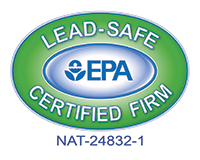Moisture in building materials can destroy structural integrity and nurture mold growth. Locating and removing all sources of moisture, quickly and accurately, is our first priority. By using infrared camera technology, we can instantly know what’s wet and what’s dry.
How Do Thermal Imaging Infrared Cameras Work?
An infrared camera is a non-contact device that detects infrared energy (heat) and converts it into an electronic signal. It is then processed to produce a thermal image on a video monitor and perform temperature calculations. Heat sensed by an infrared camera can be very precisely measured, allowing us to not only monitor thermal performance, but also identify and evaluate the relative severity of heat-related problems.
Why Infrared?
Infrared thermography is the only diagnostic technology that lets you instantly visualize and verify thermal performance. NES uses infrared cameras to show thermal problems, quantify them with precise non-contact temperature measurement, and document them with professional IR reports.
Infrared Thermography – Seeing Is Believing
Thermography is the use of an infrared imaging and measurement camera to see and measure thermal energy emitted from an object. Simply put, the higher the object’s temperature, the greater the IR radiation emitted. Infrared thermography cameras produce images of invisible infrared or “heat” radiation and provide precise temperature measurement capabilities. Nearly everything gets hot before it fails, making infrared cameras cost-effective, valuable diagnostic tools.







